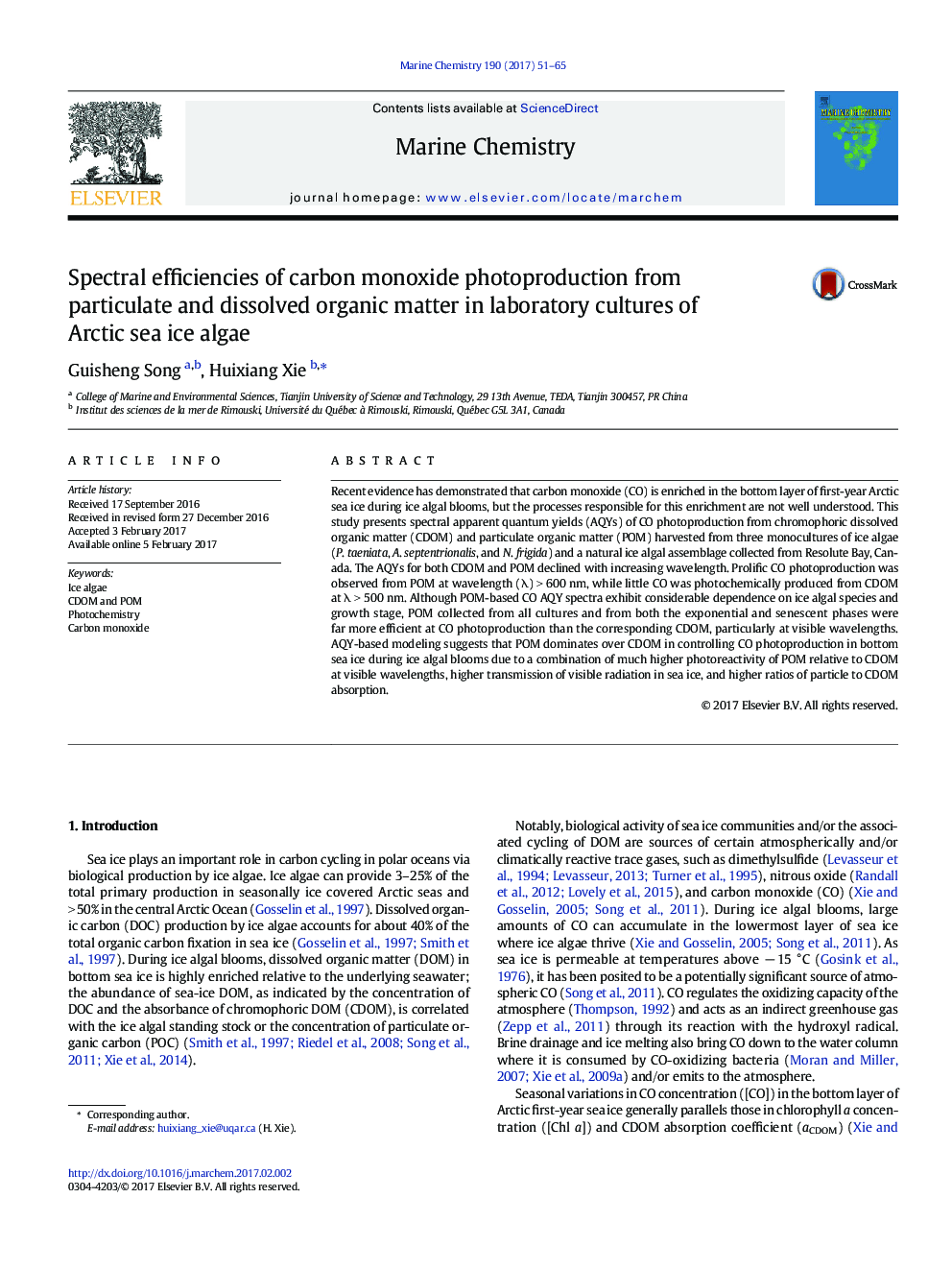| Article ID | Journal | Published Year | Pages | File Type |
|---|---|---|---|---|
| 5143649 | Marine Chemistry | 2017 | 15 Pages |
Abstract
Recent evidence has demonstrated that carbon monoxide (CO) is enriched in the bottom layer of first-year Arctic sea ice during ice algal blooms, but the processes responsible for this enrichment are not well understood. This study presents spectral apparent quantum yields (AQYs) of CO photoproduction from chromophoric dissolved organic matter (CDOM) and particulate organic matter (POM) harvested from three monocultures of ice algae (P. taeniata, A. septentrionalis, and N. frigida) and a natural ice algal assemblage collected from Resolute Bay, Canada. The AQYs for both CDOM and POM declined with increasing wavelength. Prolific CO photoproduction was observed from POM at wavelength (λ) > 600 nm, while little CO was photochemically produced from CDOM at λ > 500 nm. Although POM-based CO AQY spectra exhibit considerable dependence on ice algal species and growth stage, POM collected from all cultures and from both the exponential and senescent phases were far more efficient at CO photoproduction than the corresponding CDOM, particularly at visible wavelengths. AQY-based modeling suggests that POM dominates over CDOM in controlling CO photoproduction in bottom sea ice during ice algal blooms due to a combination of much higher photoreactivity of POM relative to CDOM at visible wavelengths, higher transmission of visible radiation in sea ice, and higher ratios of particle to CDOM absorption.
Related Topics
Physical Sciences and Engineering
Chemistry
Chemistry (General)
Authors
Guisheng Song, Huixiang Xie,
